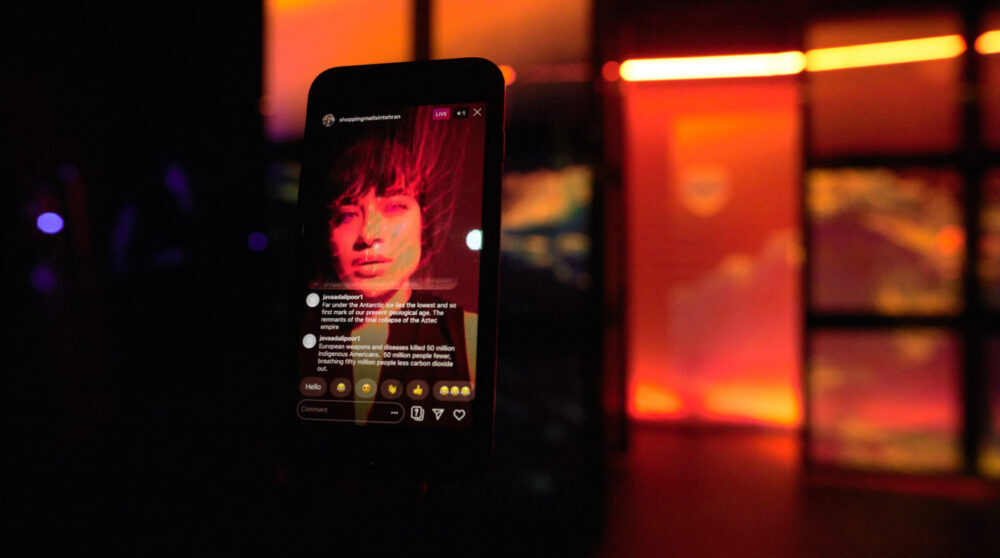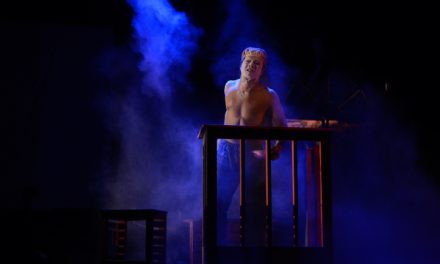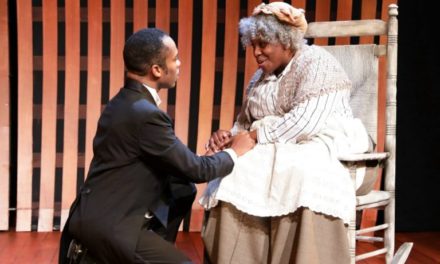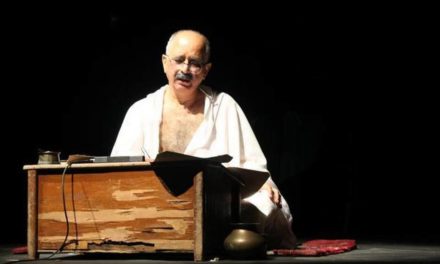The play Rich Kids: A History of Shopping Malls in Tehran, authentically narrates the story of a famous fatal Porsche crash in north Tehran that triggered heated debate on social media about inequality and the nouveau riche that represents corruption. The play was co-created by the British-Iranian playwright Javaad Alipoor and Kirsty Housley, which was performed by Alipoor and his co-performer Payvand Sadeghian simultaneously streamed on YouTube and Instagram.
I was fortunate to watch the show on May 20 and see a progressive play displaying a very touchy issue that most Iranians are familiar with on regular basis through a detailed documentary form. The play’s engaging storyline explores universal concepts including the gap between rich and poor, consumerism, digital culture, power, and the devastating effect on the planet by using a digital platform.
The play has won the Fringe First award at Edinburgh, and before COVID-19 it was staged in Theatre in the Mill, Bradford, UK in July 2019, at The Traverse as part of their Edinburgh Festival program and HOME Manchester Theater in October 2019, but canceled its UK tour in 2020 due to pandemic and evolved to an interactive digital version on YouTube and Instagram in 2021 at Public Theater, Sundance Festival and on May 20 and 21 at Norfolk & Norwich Festival. The digital play is an experimental piece that provides a sociological approach to human behavior and the ambition to display power and wealth that existed throughout history and has become more visible in contemporary time through social media.
The show involves the online audience further in its presentation by asking them to do one of the most common actions of using their smartphones and following an Instagram account, and browsing #richkids, #richkidsoftehran, and #Mallwave. The course of the play continues on Instagram live and the audience is being told to scrolling down the feed where images tell the story backward from the end to the beginning and articulately continues to play with the concept of connectivity of past and future by moving through time and history on YouTube.
The last Instagram post is set in the present time, a photo of a yellow Porsche crashed in the street rails at an upper-class neighborhood in Tehran in 2015 that has ended the life of 21-year-old Mohammad Hossein Rabbani-Shirazi, son of an influential elite, and his girlfriend Parivash Akbarzadeh, 20 that is dead on driver’s seat. The audience is asked to scroll to previous posts as the story explores the background of each character and their identity crisis while they wander around shopping malls and luxury parties and venues as Sadeghian and Alipoor narrates the story on YouTube and slowly dissect the empty shell behind consumerism and a historical urge in the world for display of power from portrait painting of a British aristocrat to clips of Mall wave and nostalgic 80’s music in vibrant mall scenes in America.

Javaad Alipoor and Peyvand Sadeghian, Photo courtesy of Woolly Mammoth.
The plays tap into the concept of entropy that is most commonly associated with a state of disorder and uncertainty that is consistent in past and future by showing blurry images of the environment being destroyed, scattered moving faces of one of the performers resonating the aimless Instagram face filters. It emphasizes that disorder is a cycle from the economic inequality to wealth that is shown by reviewing the history of Iran and also the backstory of Hossein’s father before the revolution, during war and rise of the certain elite, shopping malls and consumerism, and the birth of a generation that is uncertain of its identity.
The performers narrate and show more images on YouTube and take the story even goes further back to a local village woman looking out to sea and a colonial white man looking over the land he’s about to take and then the story goes back further, to the Aztecs and Göbekli Tepe to show that the disorder and destruction of the planet started long ago in a never-ending cycle.
The play’s subject is a very innovative choice since the rich kids of Tehran is a famous hashtag on Instagram and yet nobody has used it in a play before and naturally it was very inspiring for me as an Iranian to see the performance of a topic that has influenced the youth and sparked controversy in a society that is faced with a growing gap between rich and poor.
The strong storytelling was very engaging by its interactive features of the digital play throughout the whole performance that would not let the audience become bored or skip a beat the performers even encourage the audience urge to look at their phone by directing them to exactly when scrolling through the show’s Instagram feed, and when to turn their attention back to the YouTube presentation.
The main storyline about the hectic life of a young couple and their social climbing has all the necessary elements of a drama while the digital performance goes further beyond and constantly hits the audience with so many other concepts and information in a non-stop cycle that connects every single subject. The mind-blowing effect of connected chains and that aha moment generated from passages of history remains in the viewer’s mind for a while after the show is over. The whole production from writing to performance clearly indicates Alipoor had a considerable amount of research to dissect the roots of a real event impartially by documenting facts. The play’s digital medium provides relevant and simple images that amplify the dramatic effects. It displays the malignant nature of corruption without being judgmental and yet intellectually stimulates the audience.
This post was written by the author in their personal capacity.The opinions expressed in this article are the author’s own and do not reflect the view of The Theatre Times, their staff or collaborators.
This post was written by Niloofar Mohtadi.
The views expressed here belong to the author and do not necessarily reflect our views and opinions.


















